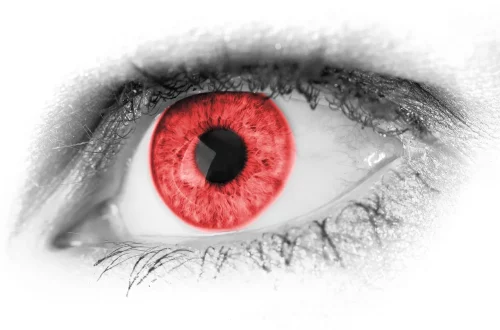
Infected Tooth Extraction Images: What to Expect and Healing Tips
Tooth extraction is a common dental procedure that many individuals might face at some point in their lives. Whether due to decay, overcrowding, or infection, the decision to extract a tooth can be daunting. Particularly, when dealing with an infected tooth, the urgency for extraction often increases due to pain, swelling, and potential complications, such as the spread of infection. Understanding what to expect during the extraction process and the healing phase is crucial for anyone undergoing this procedure.
Images of infected tooth extractions can be alarming, as they often depict the severity of dental issues. These visuals serve as a reminder of the importance of oral hygiene and timely dental visits. While the thought of extraction and its aftermath can be intimidating, knowledge can empower patients to approach the situation with confidence. Preparing for the extraction and understanding the healing process can significantly impact recovery time and comfort levels.
In this article, we will discuss the various aspects of infected tooth extraction, including the procedure itself, post-operative care, and essential tips for healing efficiently. Gaining insights into these topics can alleviate anxiety and ensure a smoother journey towards recovery.
Understanding the Tooth Extraction Procedure
Tooth extraction, especially in the case of an infection, is a straightforward dental procedure that involves the removal of a tooth from its socket in the bone. Dentists typically perform this procedure under local anesthesia, ensuring that the patient experiences minimal discomfort. The extraction process begins with a thorough examination and possibly an X-ray to assess the tooth’s condition and its surrounding structures.
Once the anesthesia takes effect, the dentist will use specialized tools to loosen the tooth from its ligaments and surrounding tissues. Depending on the tooth’s position and condition, the extraction may be simple or surgical. A simple extraction involves teeth that are visible above the gum line, while surgical extractions are necessary for teeth that are broken beneath the gum line or impacted.
During a surgical extraction, the dentist may need to make an incision in the gum tissue to access the tooth. This type of extraction is more complex and may require stitches to close the wound afterward. Regardless of the extraction type, the dentist will provide aftercare instructions to promote healing and minimize discomfort.
After the procedure, patients may experience some swelling and bleeding, which is normal. It’s essential to follow the dentist’s post-operative care recommendations to facilitate healing and prevent complications, such as dry socket or infection. Understanding the steps involved in the extraction process can help reduce anxiety and prepare patients for what lies ahead.
Post-Extraction Care for a Smooth Recovery
After undergoing a tooth extraction, especially for an infected tooth, proper care is vital for a successful recovery. Patients should expect some level of discomfort, which can be managed with prescribed pain medications or over-the-counter pain relievers. It is crucial to rest and avoid strenuous activities during the initial recovery phase.
One of the most important aspects of post-extraction care is managing bleeding. Patients should bite down gently on a gauze pad for about 30 to 45 minutes after the procedure to help form a blood clot at the extraction site. If bleeding persists, changing the gauze and applying gentle pressure can help. Avoiding the use of straws, spitting, or rinsing the mouth vigorously in the first 24 hours is also essential, as these actions can dislodge the clot and lead to complications.
Diet plays a significant role in recovery. It’s advisable to stick to soft foods and cool liquids for the first few days. Foods like yogurt, applesauce, and smoothies are excellent choices, while avoiding hot, spicy, or crunchy foods can prevent irritation to the extraction site. Staying hydrated is equally important, so patients should aim to drink plenty of water.
Oral hygiene should not be neglected, but care must be taken around the extraction site. Gently brushing the teeth and avoiding the area of the extraction for the first few days will help maintain oral cleanliness without disrupting healing. After a few days, patients can resume normal brushing and start rinsing with warm salt water to aid healing and reduce the risk of infection.
Signs of Complications and When to Seek Help
While many patients recover smoothly after a tooth extraction, it’s crucial to recognize signs of complications that may arise, especially following the extraction of an infected tooth. One common issue is dry socket, which occurs when the blood clot at the extraction site becomes dislodged or dissolves prematurely. Symptoms of dry socket include severe pain that radiates to the ear or jaw, bad breath, and an unpleasant taste in the mouth. If these symptoms occur, it is essential to contact a dentist immediately for evaluation and treatment.
Infection is another potential complication after tooth extraction. Signs of infection may include increased swelling, persistent pain, fever, or pus discharge from the extraction site. If a patient notices any of these symptoms, it’s crucial to seek dental care promptly. Addressing infections early is key to preventing further complications and ensuring a smoother recovery.
Maintaining follow-up appointments with the dentist is also vital for monitoring recovery. Dentists can assess the healing process and address any concerns patients may have. Open communication with the dental team will provide reassurance and guidance throughout the recovery journey.
In conclusion, while the thought of infected tooth extraction may seem intimidating, being informed about the procedure, post-operative care, and potential complications can significantly ease anxiety. Taking proactive steps to care for oneself after the extraction will promote healing and lead to a more comfortable recovery.
**Disclaimer:** This article is not intended as medical advice. Always consult with a healthcare professional for any health-related questions or concerns.




